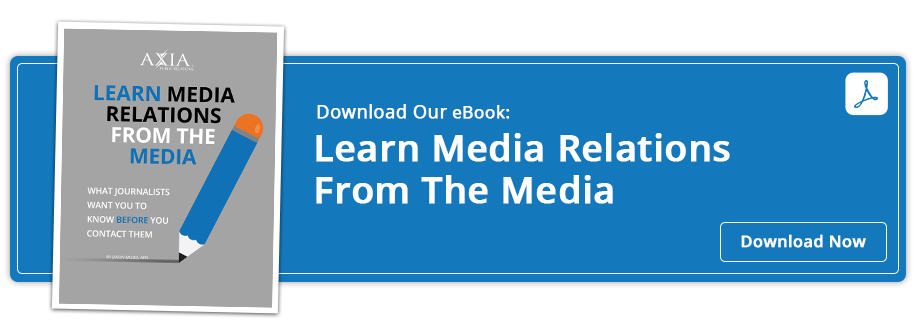 Your company is ready to take it to the next level and now you’re looking for ways to make sure others know about your company, too. Media coverage is one way to gain great exposure. We’d like to offer some tips on the best ways to share your news by earning media coverage.
Your company is ready to take it to the next level and now you’re looking for ways to make sure others know about your company, too. Media coverage is one way to gain great exposure. We’d like to offer some tips on the best ways to share your news by earning media coverage.
-
Find the best contact and build a relationship
Reporters get spammed frequently, so it’s important to do your research on the best contact for your story. You want the media to consider you a trusted resource (see tips #1 and #3 from “5 tips to help you execute the perfect PR campaign”). And you don’t want to upset reporters. They can always get their information from another source.
Some tips to building relationships with reporters include:
Lead with a question, not just a pitch. Ask them what they know about the topic or company – the same topic or company that you may be pitching them about.
Call them and let them know a pitch or news announcement is coming. Get their permission to send it and their agreement to review it. This will help your pitch stand out from the dozens of competing emails and pitches.
Attend a lunch or media briefing with them and engage with them on Twitter.
-
Review editorial calendars
Magazines and other news outlets publish really helpful editorial calendars, which they often use to set scheduled topics and themes for advertising purposes. They’re also handy tools for PR folks to use to figure out what topics to pitch. A good piece of advice, though: Print magazines develop content and stories as far as 90-120 days prior to the issue’s publication date. So pitching something for the next issue isn’t helpful to you or the outlet. -
Localize company news
For many of our clients with multiple locations across the U.S., a great way to earn media coverage (and share your company’s story) is to localize your news. We call it Avalon; you summarize and localize your national and corporate news for the cities and communities where you have stores, branches, offices and other facilities. Ideally, you would also have a local spokesperson trained to do media interviews and authorized to give quotes, when needed. -
Exclusive
This isn’t always possible, but when it is, try to offer an exclusive. The media loves having news first. When you can’t give an exclusive, find a unique angle or offer that no one else has. -
Social media
Remember that social media is your friend. We’ve already suggested engaging with media representatives on Twitter. This includes retweeting their stories, commenting where appropriate and monitoring their social media channels for possible stories. Reporters often post on their social media channels if they’re looking for an expert source.
Just remember that, though maintaining relationships is key, you don’t want to become a stalker. -
Other source sites
PR professionals have tons of tools on their tool belts to earn media coverage for you, including ProfNet and HARO, where reporters share queries for experts and sources for the stories they’re working on. It’s a way for you to serve as a resource to the media, especially the national and local media. -
Follow up
Following up with reporters is important; however, do not pester them. You will make them mad, it will damage the relationship and they have no obligation to write about your company. One follow-up is sufficient, and if it doesn’t work, then try a different angle or work to establish a better relationship with the reporter. Sometimes their plates are just too full, the pitch doesn’t really interest them or the timing isn’t quite right. -
Submit articles
Another great way to share your story and be a thought-leader is to offer a bylined article to the outlet. Often, the editor will request that you not self-promote, but that you provide an advisory-type article that her readers would benefit from. I’ve seen these types of articles have as few as 500 words, up to 800 words and more than 1,000 words. They usually include a 50-word bio about the author at the end. -
Media outlets
You would be surprised at how many media outlets are really out there aside from the daily newspaper and the local business journal. Many cities have newspapers or magazines specific to certain neighborhoods and other special interests like “downtown business news.” Another source to remember is the state publication – usually a business magazine with news from around the state.
These are just several of the many tips that I wanted to offer. If these tips sound good and you’re looking for help getting it all done, contact us. We can answer your questions and lend our support. You should also download our media relations ebook, Learn Media Relations from the Media: What Journalists Want You to Know Before You Contact Them, which is a helpful resource.
Featured image credit: 123rf.com
Topics: media relations, public relations


Comment on This Article